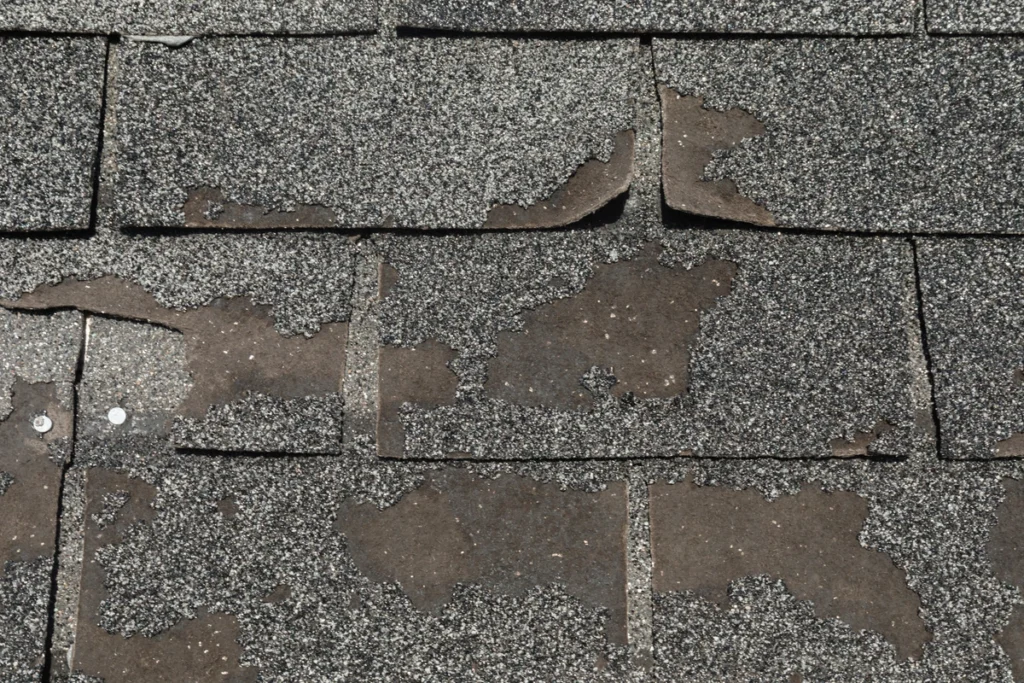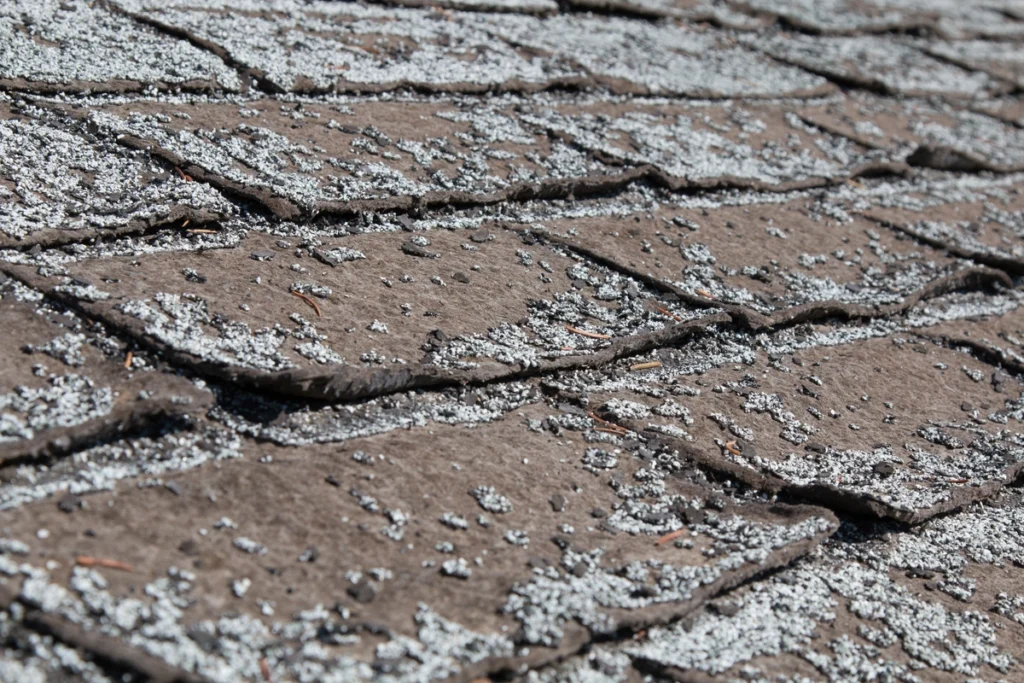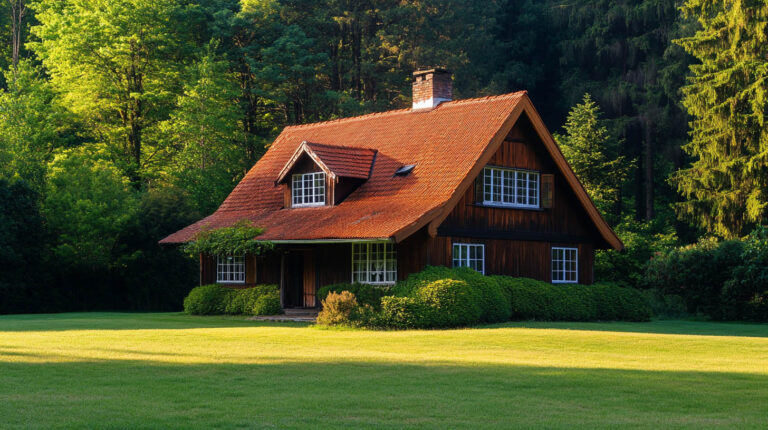
Blog
Shingle Granule Loss: What it Means and What to Do Next
Did you know that the average lifespan of a roof is about 25 to 30 years? However, this can be greatly reduced if proper maintenance is not performed. One common issue that homeowners face with their roofs is shingle granule loss.
Shingle granules play a crucial role in protecting the roof from the elements and prolonging its lifespan. In this article, we will discuss what shingle granule loss is, what causes it, and what steps you can take to address the issue and protect your roof.
What Is Shingle Granule Loss?

Shingle granule loss refers to the loss of the small, gritty particles that cover the surface of asphalt shingles. These granules serve an important function. They protect the shingle from the damaging effects of the sun and weather.
The granules are typically made from materials like ceramic, crushed rock, or minerals. They are embedded in a layer of asphalt on the shingle’s surface.
Over time, these granules can become dislodged, leaving the shingles exposed and vulnerable to the elements. This can lead to premature aging of the shingles, reduced energy efficiency, and an increased risk of leaks and water damage.
Causes of Shingle Granule Loss
Shingle granule loss can happen thanks to a variety of factors. Some of the most common causes include:
- natural aging
- weather damage
- poor installation
- foot traffic
- improper roof maintenance
Aging is the most common cause of shingle granule loss. Over time, the shingle granules can become loose and fall off, leaving the shingles exposed and vulnerable to the elements. Weather damage, such as hail, wind, and heavy rain, can also cause granule loss by physically dislodging the granules.
Poor installation can also contribute to shingle granule loss. If the shingles are not properly installed, they may not adhere, causing the granules to become loose and fall off.
Foot traffic is another common cause of shingle granule loss. If people walk on the roof, especially if they are wearing shoes with hard soles, the granules can become dislodged.
Finally, improper maintenance can also contribute to shingle granule loss. Neglecting to clean the gutters, failing to address leaks, and neglecting to remove debris from the roof can all contribute to shingle granule loss over time.
Signs of Shingle Granule Loss
If you suspect that your roof may be experiencing shingle granule loss, there are several signs to look out for. Here are some of the most common indications:
Visible Loss of Granules

This is perhaps the most obvious sign of shingle granule loss. If you notice small granules in your gutters or on the ground around your home, this is a sign. Or if you can see bald spots on the shingles themselves, it is likely that your roof is losing granules.
Inconsistent Color on the Roof
Another sign of shingle granule loss is an inconsistent color on the roof. If some areas of the roof appear darker or lighter than others, this may be due to the loss of granules in those areas.
Increased Frequency of Clogged Gutters
As shingle granules become dislodged, they can accumulate in the gutters. This causes them to clog more often than usual.
Granules in Downspouts
Do you notice small granules coming out of your downspouts during heavy rain? This may be a sign that your roof is experiencing granule loss.
Shingles Curling or Buckling
When shingle granules become dislodged, the shingles can begin to curl or buckle. This is a more advanced sign of granule loss and may show that the roof is in need of repair or replacement.
If you notice any of these signs, it is important to have your roof inspected by a professional. They can determine the extent of the damage and what steps to take to address it.
The Consequences of Shingle Granule Loss
Shingle granule loss can have several consequences for your roof and your home. Here are some of the most significant impacts:
Reduced Lifespan of the Roof
Shingle granule loss can significantly reduce the lifespan of your roof. Without the protective layer of granules, the shingles are more vulnerable to the damaging effects of the sun and weather. This can cause premature aging and deterioration.
Increased Risk of Leaks and Water Damage
As the shingle granules become dislodged, the shingles themselves can become more porous. This allows water to seep through and cause damage to the underlying roof structure. This can lead to leaks, water damage, and even mold growth.
Reduced Energy Efficiency

The granules on asphalt shingles help to reflect sunlight and heat away from the roof. This reduces the amount of heat absorbed into the home. As your roof loses its shingle granules, it can become less energy efficient.
This can lead to higher heating and cooling costs.
Decreased Aesthetic Appeal
Shingle granule loss can also have an impact on the appearance of your roof. Bald spots or inconsistent coloration can make the roof look patchy and unsightly.
Increased Repair Costs
Finally, if shingle granule loss is not addressed promptly, it can lead to more significant damage to the roof and underlying structure. This can result in higher repair costs down the road.
It is much more cost-effective to address shingle granule loss as soon as it is identified. Don’t wait for more significant damage to occur.
What to Do Next
If you suspect that your roof may be experiencing shingle granule loss, there are several steps you can take.
The first step is to have your roof inspected by a professional. A trained inspector can assess the extent of the damage and recommend the most appropriate course of action.
Depending on the severity of the shingle granule loss, you may need to consider repair or replacement options. In some cases, a simple repair may be enough, while in others, a full roof replacement may be necessary.
If you are replacing your roof, it is important to choose high-quality shingles that are designed to resist granule loss and other types of damage. Look for shingles that are rated for your climate and that come with a strong warranty.
Another option to protect your roof from shingle granule loss is to invest in a roof coating or sealant. These products can help to restore the protective layer of granules and extend the lifespan of your roof.
Get an Inspection Today
Address shingle granule loss right away to protect your home from the damaging effects of the sun. Don’t wait until it’s too late – take action now to keep your roof in top condition.
The experts at Avenue Roofing can help you decide what to do. Contact us today for a quote and advice. We help homeowners in Jacksonville, FL with all types of roof repairs and maintenance.



